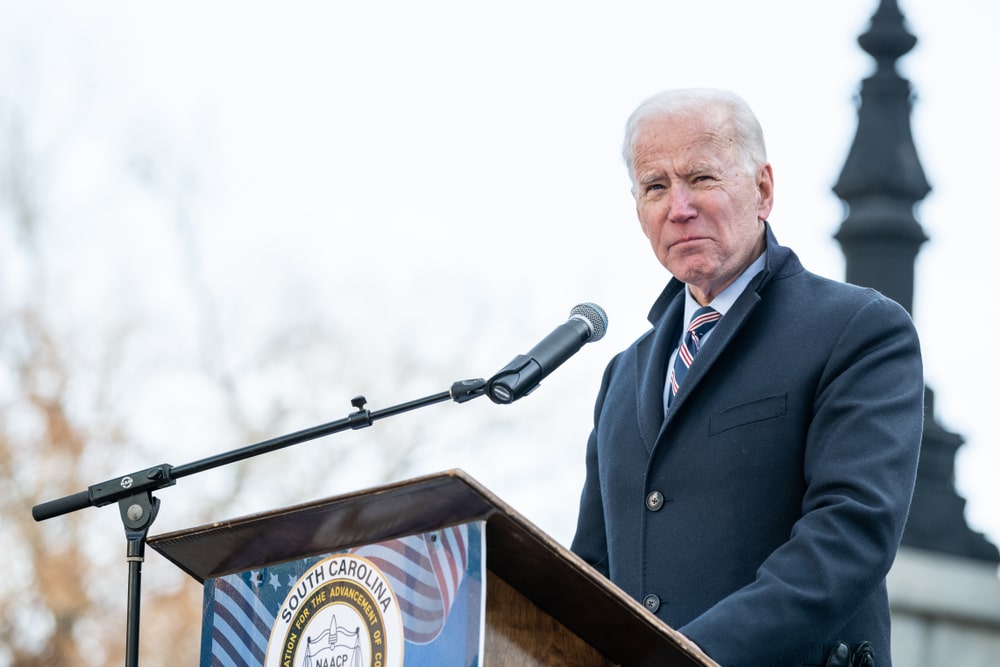Did you take notice of these things Joe Biden did during his presidency?
When it comes to the president, a lot of people focus on what he has not done. But can you name the things Joe Biden did while he was in office?
As the election year is slowly coming to an end, we await to see whether or not the president will be with us for a second term. It is good to think back on the things he has achieved during his term.
While some will point fingers and blame the president for things that are not in his power, they also forget to mention the things he has done that have made a positive impact on people’s lives, while also making sure to keep to his promises for why he was elected.
Joe Biden has done a lot of things in his time in office, and while we can criticize certain things he did that we do not agree with, let’s also take a moment to remember what he did that positively impacted the American people.
We have brought you here a couple of the things he has done that you should remember as a way to not let this presidency seem only plagued by bad things!
Do you remember any other things Joe Biden did as president? Which ones do you consider the most important? What is your opinion on the ones we have selected? Let us know in the comments down below!

Overtime is guaranteed for millions of workers.
The issue.
When it comes to overtime pay a lot of people are immediately feeling some sort of negative feeling. This is because there are a lot of businesses that do not want to compensate overtime or their overtime pay is not up par with what workers seem to see as fair.
Back during President Obama’s second term, he oversaw new regulations that would make it so workers who earn up to $47,476 would be automatically entitled to receive time and a half pay for all their overtime.
This has been seen as a controversial move by businesses, which opposed the legislation, as well as Republicans, who went on to try to block the rule in the courts and the Congress. When Donald Trump was elected, this legislation saw changes, as besides his say a Texas court ruling led to the revision of the matter.
The Department of Labor in 2016 ended up making the threshold for those who could receive the time and a half overtime pay significantly lower, with the new amount being $35,568.
What did Biden do?
Under Biden’s instruction, the Department of Labor has reopened the issues, and they came up with a revision late last August; the cutoff was going to be increased so that more people could benefit from this regulation, exceeding the initial amount that Obama has agreed to in his regulation.
Now the final draft contains a threshold of $55,000 along with a mechanism that would oversee the automatic adjustment of the level once every three years; the limit would be adjusted to the 35th percentile of the annual income.
What happened as a result?
This proposed rule would impact around 3.6 million extra workers who would end up becoming eligible for the time-and-half overtime pay, a huge increase from the 2019 policy that was approved.
Under Biden’s term, it is the most ambitious and concrete policy that would boost the wages of workers, and it seems like it could end up being successful. This is the most ambitious one that would be passed, as other wage-related proposals from Biden and his administration, such as raising the minimum wage, have ended up unsuccessful since Congress bottled it up.
What is the eventual conclusion?
By late April 2024, this rule is expected to be finalized, but the agency needs to prepare for the opposition that would be raised against it. Much like the legal arguments that were raised when Obama proposed his initial ruling, there will be similar ones stymied along with potential others, so the Department of Labor needs to prepare accordingly to defend their ruling.
What’s more, there is always the possibility of lawmakers appealing to the Congressional Review Act; this tool has been used in recent years against both Obama and Trump-led rulings. Any internal delays that could occur that would prevent the ruling from being finalized by the term initially envisioned put this regulation at risk of being overturned by this constitutional tool.

Stopped discriminatory mortgage lending.
The issue.
Back in 1977, financial redlinig was a practice that the government had to tackle despite having spent decades militating for it. They tried to discourage lenders from extending loans and mortgages to residents of black neighborhoods.
Congress ended up passing a law that would combat this practice, the Community Reinvestment Act; under this new law, banks could not deny anyone access to a loan based on the fact that they lived in a low-income neighborhood. If the bank had a branch that could handle deposits in the neighborhood, then it had to offer mortgage loans and other loans to people who lived in the area.
Yet, as technology has evolved, so has the banking system. With mobile banking and Internet banks appearing, there are a lot of banks that have a presence in neighborhoods where there are no branches since people are no longer entirely reliant on physical banks.
This allowed banks to continue to redline, but maybe not as obviously as they did before.
What did Biden do?
Independent bank regulators, together with the Federal Reserve, have worked on a new framework for anti-redlining, which is set to go into effect in January 2026.
This new framework requires all banks to offer loans to lower-income communities, especially in areas of town where there is a concentration of small business loans and mortgages.
This means that there is no need for a physical branch to be present in the community for the people there to access loans, and banks will not be able to use the physical branch excuse to refuse to give low-income people loans.
What happened as a result?
The law has not yet taken effect, but the hope is that this new framework will create equitability between all people so that even low-income people can access the funds they need.
What’s more, there is hope that this will end up bringing more money to low-income areas, which can help towards the betterment of these neighborhoods.
What is the eventual conclusion?
Since the passing of the Community Reinvestment Act, most financial agencies have been trying to find the best way and practice to give access to all people to credit and loans; this is especially true when looking at poorer communities, which are generally refused when it comes to the likes of credit and loans, sometimes based on where they live rather than their financial situation.
In reality, despite the act, it seems that the racial homeownership gap has only widened, and even when compared with the situation in 1968 (when redlining was legal), the situation is worse now. This new act has been passed in the hope of closing that gap and giving even low-income people the chance to be homeowners.
If you are interested in reading more about financial redlining, we recommend this book on the matter, which you can easily purchase on Amazon.

Oral contraceptives over the counter.
The issue.
Despite it being an issue that predated Biden’s first term, oral contraceptives being available to everyone without a prescription has taken percent during his presidency.
The urgency has been created due to the Supreme Court overturning Roe v. Wade in 2022 and the fact that more and more conservatives have started to question the legal precedent of the right to privacy when it comes to birth control access.
Once the overturn was official, a contraceptive maker, which had previously studied the ability of consumers to correctly use this type of medication without doctor supervision, applied their product for over-the-counter approval with the FDA.
What did Biden do?
In 2023, despite certain concerns of some FDA scientists about the comprehension of the risks and proper use of the medication, the agency endorsed the availability of this pill for over-the-counter use with the backing of the president.
What happened as a result?
Walgreens and CVS have pledged to carry this new medication, which has gotten the name Opill. This oral contraceptive has become available over the counter in 2024.
Reproductive rights activists and advocates have long claimed that this availability of OTC contraceptives will end up making birth control access equal, including for the likes of people who do not have easy access to a health care provider or who encounter a doctor who refuses to give them such a prescription due to personal reasons.
What is the eventual conclusion?
Opill’s success will be determined by its price, which has been set at $19.99 for a month’s supply, with options to be bought in bulk as a three- and six-month supply, which are $49.99 and $89.99, respectively. The bulk option has been available to be bought only since March 18, both on the official website of the medication and on Amazon and other online retailers.
The Affordable Care Act offers access to birth control without copay. A lot of people are predicted to not want these medications to show up on their insurance, so they will pay out of pocket for them.
The Biden administration has been reported to be looking into requiring no-cost coverage for several OTC medications, including Opill, without a need for a prescription through most commercial insurance plans.
There are a lot of other things that Biden did during his term, and there are many more that he plans to do in his next term if he is reelected! What are his plans, and what do we think he plans to do? You can check out our speculations in this article here!







